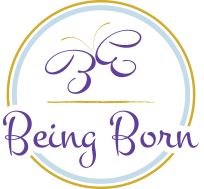With You In Every Step
What is a Midwife?
The Midwifery Model of Care includes the following:
- Monitoring the physical, psychological, and social well-being of the birthing mother throughout the childbearing cycle
- Providing individualized education, counseling, prenatal care, and continuous assistance during labor and delivery and postpartum support
- Minimizing technological interventions
- Identifying and referring those who require obstetrical intervention
”The application of this model has proven to reduce the incidence of birth injury, trauma, and cesarean section…The countries with the lowest mortality and morbidity rates for mothers and infants are those in which midwifery is a valued and integral pillar of the maternity care system. The midwifery model is a low-tech, high-caring model that produces excellent outcomes not only for low risk clients, but for vulnerable and at-risk people as well” – MANA
Midwifery Through the Years
Midwifery is the oldest recorded career. Midwives have been helping families have their babies since before written history. Traditionally, midwifery skills were passed down from generation to generation with the most experienced midwives training the younger midwives. Often the older and younger midwives attended births together until the older midwife could no longer continue and then the apprentice became the teacher and took on a younger midwife to train. In this way, skills and knowledge were passed on from the ones who had seen and helped with more births and the younger ones received support while they were learning the profession.
In the 13th century medicine became a profession and a science. At the same time, all females were excluded from universities and thus female healers were seen as illegitimate practitioners. Until that time, babies had been born at home with the village midwife and many families were resistant to birthing with a doctor. In order to gain business and discredit midwives and herbalists, the doctors labelled them witches, denied their skills and expertise, and persecuted them for practicing outside of the budding medical system.
At this time, the profession of midwifery basically went underground and was carried on by the granny midwives of color and other poor women who served those in higher positions. There was little respect given to those who helped families have their babies at home. With the rise of witch hunts, the lower-class women healers were forever seen as superstitious and potentially evil. This opened the door for 17th and 18th century medical doctors to be seen as the “safe choice” for pregnant moms. In all fairness, with the advance of medicine, lives were being saved. With the development of germ theory, sterile fields, and understanding of anatomy, health care improved and `the maternal and infant deaths rates improved across the world. But as with many things, the pendulum swung too far and before long medical interventions began causing some of the problems they were hoping to avoid.
